First Day of School 2025 Activities Teaching Resources
Dive into a curated collection of teacher-created first-day-of-school activities, printables and icebreakers to help your students settle in and feel comfortable whether they're starting their very first day in elementary school or just their first day of the 2025-26 school year!
This collection of printables and digital activities for teachers to use on the first day of the school year was created by the expert teacher team at Teach Starter with an eye on providing teachers everything they need to make kids feel safe and respected from day one. Let your students know they've found a warm and welcoming classroom environment where they can thrive this school year!
From activities that will help you set expectations early to printable forms you can use to collect important student information and so much more, this collection has your entire day (and first week) covered!
Still need a few ideas? Read on for some tips from our teacher team on what to do on the first day of school, plus some inspiring first day of school quotes to share with your students!
What to Do on the First Day of School for Students
If it's your first year as a teacher or your very first day in a brand new classroom, you may be wondering what to do on the first day of school for students. Don't worry!
Our team of expert teachers have put together dozens of first day activities that you can explore throughout this collection, but we didn't stop there. Here are some more things to do on the first day of school! Some things you might want to add to your list:
- Introduce Yourself — Giving your students a chance to get to know you is the first step to a great student-teacher relationship, and that all starts on the first day! Introduce yourself to your students, share the name you prefer they use (Mrs. S? Mr. Jones?) and share a little information about your own background and interests. How much of your personal life you want to share here is up to you, but a few details, like what you like to do in your spare time or if you have any pets, can help students see that you're a lot more like them than they may have thought!
- Break the Ice — Once you've introduced yourself, it's time for your students to introduce themselves, allowing everyone to become familiar with each other. Icebreaker activities like name games or "get-to-know-you" exercises help create a sense of classroom community and start kids off on the road to solid student bonding.
- Give a Classroom Tour — Give students a tour of your classroom and highlight important areas such as where the supplies can be found and areas where they should store personal belongings.
- Introduce Your Classroom Rules and Procedures — The first day is a good time to introduce the specific procedures or rules that you expect students to follow, such as raising hands, taking turns or using classroom resources. It's also a good time to share your rules and expectations, emphasizing the importance of respect, kindness, and cooperation. You may want to get your class involved in creating a set of class rules, fostering a sense of ownership and responsibility. Important Note: Although rules and procedures should be introduced on the first day of school, don't expect kids to "get" it all right away! Practice, practice, practice!
- Explain Any Classroom Routines and Schedules — In addition to rules and procedures, you'll also need to familiarize students with the daily routines and schedule they'll need to follow, including arrival and dismissal procedures, transitions between subjects or activities and any special events or routines unique to the classroom. Establishing a predictable routine helps create a sense of structure and security for students, but once again, expect to keep practicing these far past the first day!
- Establish Classroom Procedures for Asking Questions or Sharing Concerns — Key to any safe classroom environment is ensuring you provide a space where students feel comfortable asking questions or expressing concerns. Establishing the procedures that students should follow when they need to ask for help sets the tone for the entire school year!
- Collect Important Student and Parent Info — The first day of school is often homework assignment day ... parent homework, that is. Maybe your district sends email reminders for parents to fill out all the necessary student information online. But if not, you may need to distribute forms for parents to fill out so you can gather the required information, such as emergency contact numbers or details on allergies.
- Assess Students' Strengths and Weaknesses — Starting on the first day or first week of school, you can start simple assessments or activities to gauge the students' academic levels and identify their strengths and weaknesses. These assessments will help guide instructional planning and differentiate instruction to meet individual student needs.
- Try Some Get-to-Know-You Activities — Expanding on the icebreakers that are a fun way to get students acquainted on the first day of school, you may want to incorporate fun and engaging activities to help students become more familiar with one another. The Teach Starter site is full of fun teacher-created "All About Me" posters plus group games and discussion starters to make your planning easier!
- Explore Classroom Materials — Students don't just need to know the procedures for accessing supplies. Give them a chance to explore and familiarize themselves with classroom materials, including textbooks, books from your classroom library, manipulatives and more. You might want to organize a few small group or independent activities that allow students to interact with different materials in a hands-on manner.
First Day of School Quotes for Teachers
Looking for some inspiring words to write on your whiteboard to set the tone for the new school year? Here are a few of our teacher team's favorite first day of school quotes that may just fit the bill!
- "Every accomplishment starts with the decision to try." — President John F. Kennedy
- "Education is the passport to the future, for tomorrow belongs to those who prepare for it today." — Malcolm X
- "The beautiful thing about learning is that no one can take it away from you." — B.B. King
- "The first day of school is the day when your story begins, so make it a great one." — Adam Braun
- "The future of the world is in my classroom today." — Ivan Welton Fitzwater
- "The first day of school is the first page of a brand new chapter in your life." — Ritu Ghatourey
- "You are never too old to set another goal or to dream a new dream." — C.S. Lewis
- "The journey of a thousand miles begins with a single step." — Lao Tzu
- "Education is the most powerful weapon which you can use to change the world." — Nelson Mandela
- Free Plan
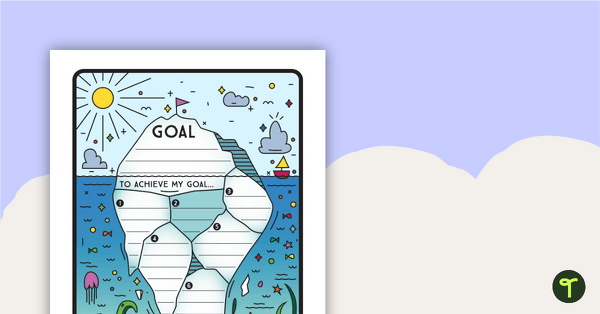
Goal Setting – Iceberg Template
Download a free goal setting template that helps students identify singular aspects that they need focus on to achieve a goal.
- Free Plan
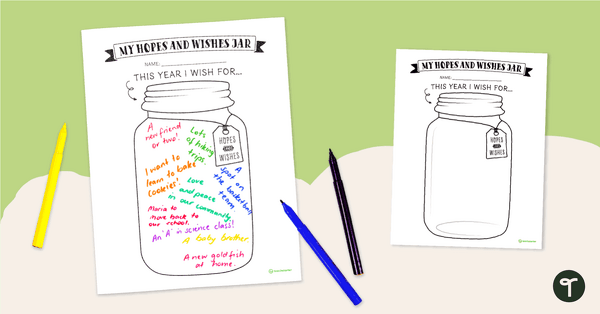
Hopes and Wishes Jar - Goal Planning Template
Have your students craft a hopes and wishes jar to set goals for the school year.
- Free Plan
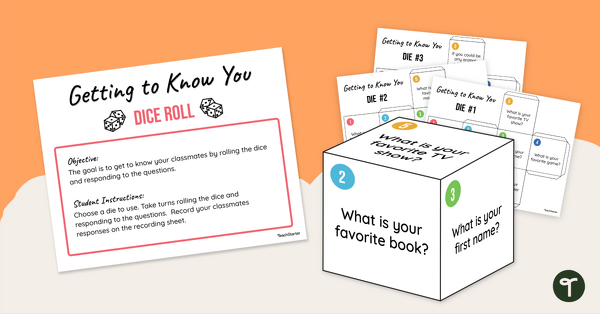
Back to School - Get to Know You Dice Game
Play a Get to Know You dice game for students to get to know their classmates.
- Free Plan

All About Me Sundae - First Day Activity
- Free Plan
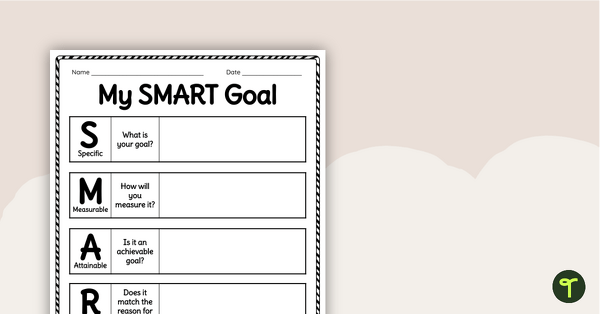
Printable SMART Goals Template
Start the school year by having your students use a printable template to set their own S.M.A.R.T. goals.
- Free Plan
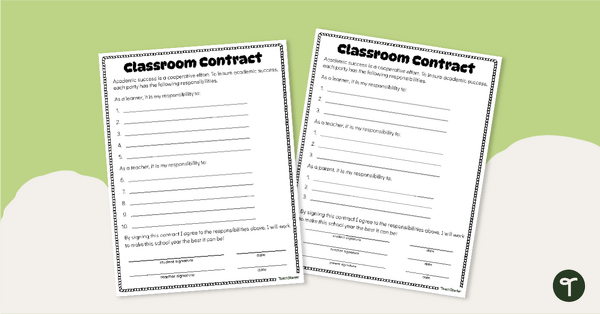
Student Behavior Contract Template
Create a classroom community and ensure adherence to rules and procedures with a printable Student Behavior Contract Template.
- Free Plan
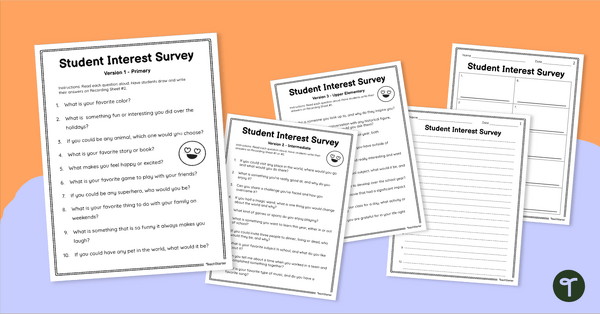
Student Interest Survey Pack
Use a Student Interest Survey to get to know your new students at the beginning of the school year.
- Plus Plan

This or That? Icebreaker Game
Encourage new friendships in your classroom with an interactive This or That? Icebreaker activity.
- Plus Plan
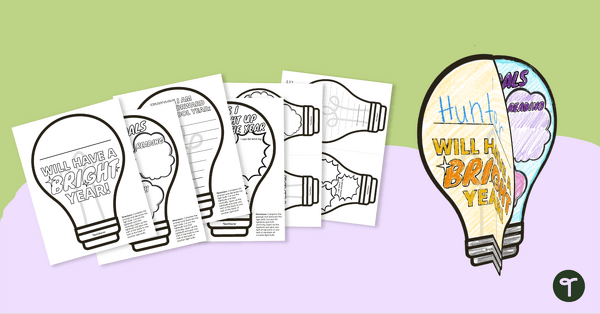
Have a Bright Year! Lightbulb Goal Setting Craft
Brighten up your first day of school with a fun Lightbulb-themed goal-setting craft activity.
- Plus Plan
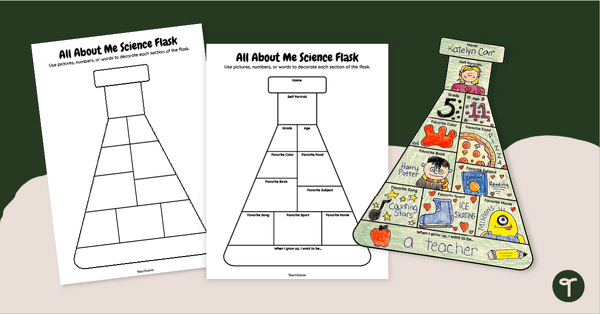
All About Me Science Flask Template
Get to know the science behind your new students with an All About Me Science Flask Template.
- Free Plan
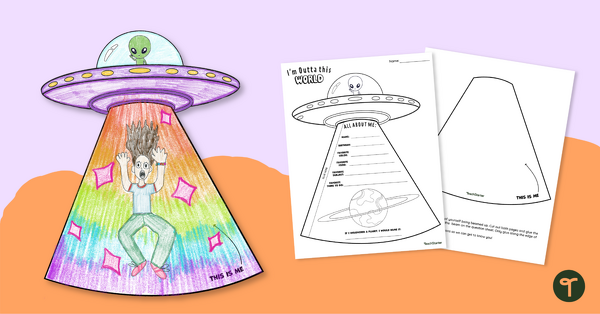
I'm Outta This World - About Me Kids' Craft
Create an easy paper craft that is out of this world with a printable Alien-themed All About Me template.
- Free Plan
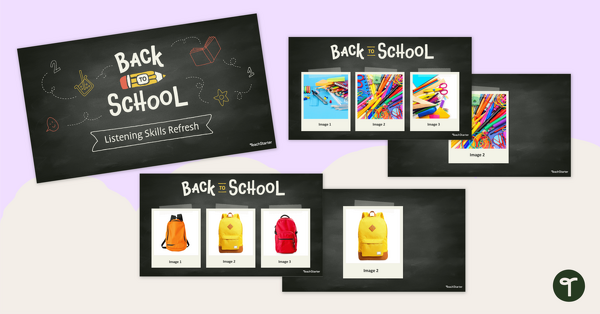
Back To School - Listening Skill Refresh Activity
Refresh student listening skills with a Back to School Listening Skill Refresh Slides and script.
- Plus Plan

Back to School Bookmarks
Celebrate the new school year with these back-to-school bookmarks.
- Free Plan
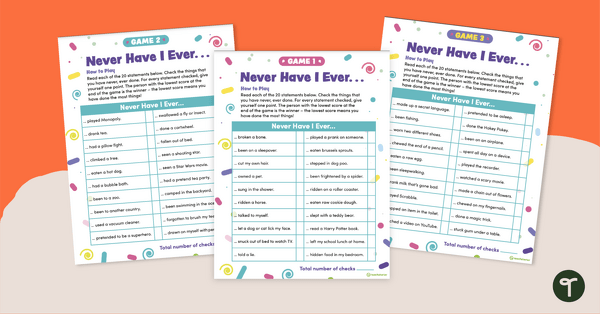
Never Have I Ever Questions for Kids ... Getting to Know You Game
See fun "Never Have I Ever" questions for kids to break the ice in your classroom and help students get to know one another.
- Free Plan
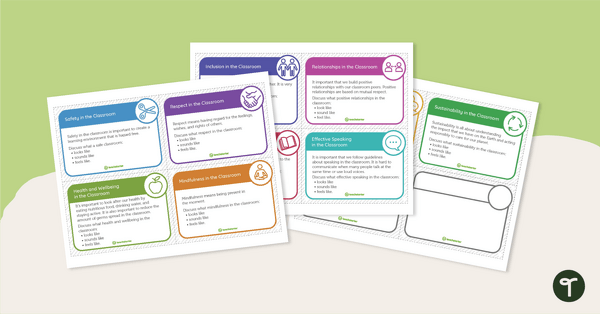
Student Behavior Discussion Cards for the Classroom
Print free student behavior discussion cards to encourage your class to think about what a positive learning environment looks like, sounds like, and feels like.
- Plus Plan
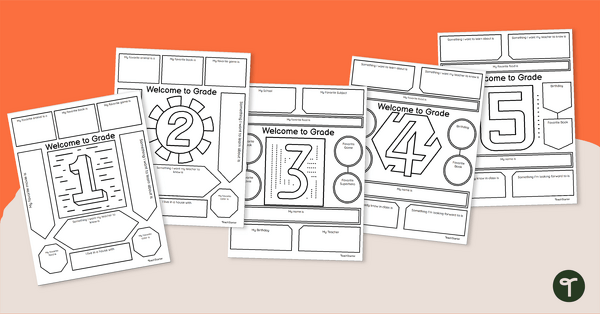
Editable All About Me - Getting to Know Me Worksheet
Use this printable Grade Level Getting to Know Me Worksheet to engage your students on the first day of school.
- Plus Plan
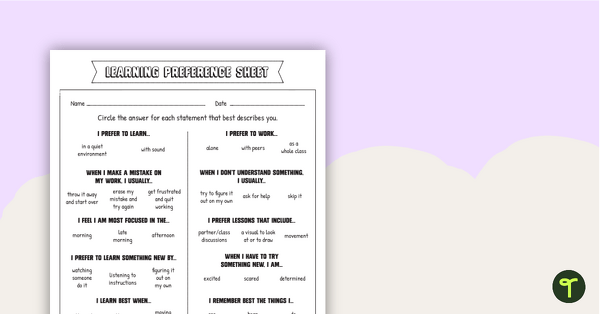
Learning Style Inventory Worksheet (3-5)
Learn your new students' learning styles and more with a printable Learning Styles Inventory Worksheet for upper grades.
- Plus Plan
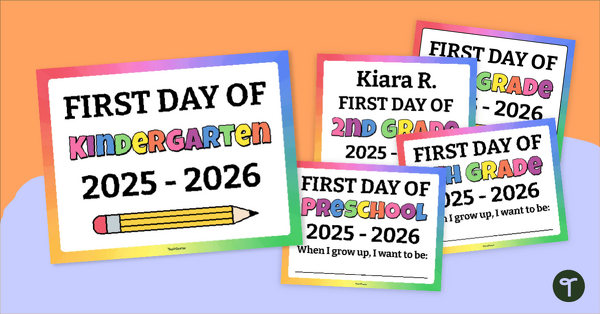
First Day of School Signs
Smile big and use our Printable First Day of School Signs to brighten up your first day photo ops!
- Plus Plan
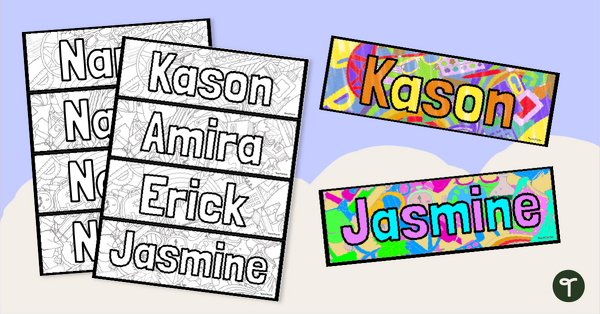
Back to School - Personalized Name Coloring Bookmarks
Inspire your new students to read, read, read with their very own personalized name bookmark to color!
- Free Plan
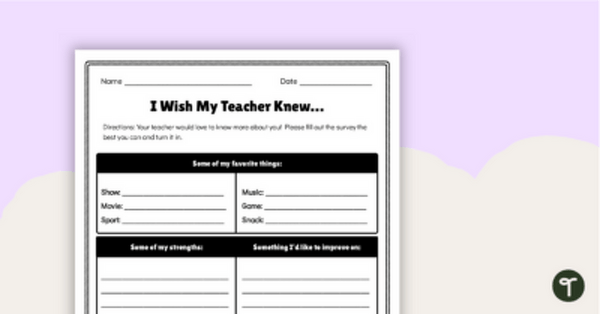
I Wish My Teacher Knew Activity Sheet
Add an ‘I Wish My Teacher Knew’ activity to your first-day plans to learn more about your new students.
- Plus Plan
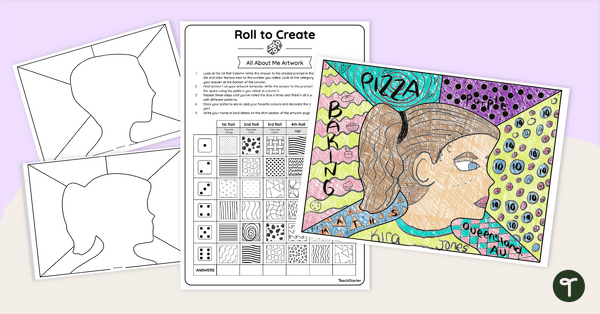
Roll to Create - All About Me Drawing Game
Roll to create a fun About Me Artwork with a printable back-to-school drawing game.
- Free Plan
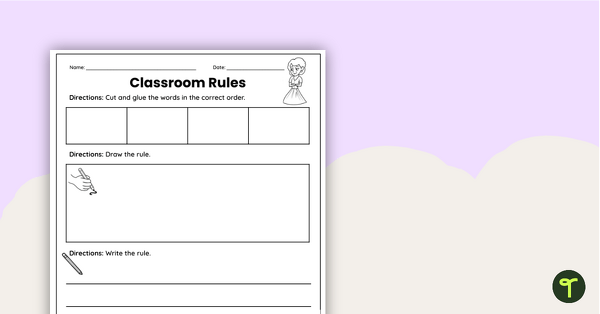
Rules in the Classroom Worksheet Pack (K-1)
Teach classroom rules and procedures and review early writing skills with a free Rules in the Classroom Worksheet pack for primary grades.
- Plus Plan
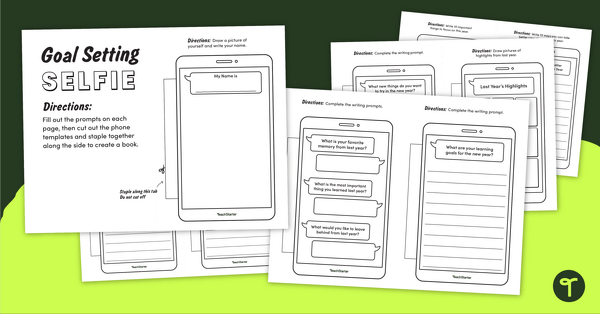
New Year Goal Setting Selfie Project
Inspire your students to reflect and set goals for the new year with a New Year Goal Setting Selfie Project.
- Free Plan
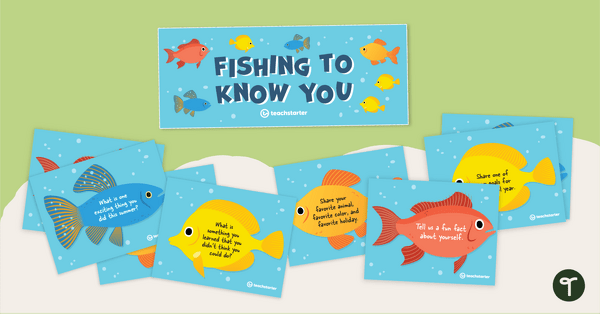
Fishing to Know You
Get to know your new class at the beginning of the year with this Fishing to Know You activity.
- First Day of School 2025 Activities Templates
- First Day of School 2025 Activities Games
- First Day of School 2025 Activities Craft Activities
- First Day of School 2025 Activities Worksheets
- First Day of School 2025 Activities Active Games
- First Day of School 2025 Activities Task Cards
- First Day of School 2025 Activities Interactive Activities
- First Day of School 2025 Activities Projects
- First Day of School 2025 Activities Writing Templates
- First Day of School 2025 Activities Bulletin Board Displays
- First Day of School 2025 Activities Coloring Pages
- First Day of School 2025 Activities Labels Signs Decorations
- First Day of School 2025 Activities Mini Book
- First Day of School 2025 Activities Escape Room Games
- First Day of School 2025 Activities Sorting Activities
- First Day of School 2025 Activities Bingo
- First Day of School 2025 Activities Cut and Paste Worksheets
- First Day of School 2025 Activities Fortune Teller Templates
- First Day of School 2025 Activities Bookmarks
- First Day of School 2025 Activities Puzzles
- First Day of School 2025 Activities Logic Puzzles
- First Day of School 2025 Activities Word Searches
- First Day of School 2025 Activities Tracing Worksheets
- First Day of School 2025 Activities Dice Games
- First Day of School 2025 Activities Card Games
- First Day of School 2025 Activities Exit Tickets
- First Day of School 2025 Activities Checklists
- First Day of School 2025 Activities Color by Code
- First Day of School 2025 Activities Posters
- First Day of School 2025 Activities for Pre-K
- First Day of School 2025 Activities for Kindergarten
- First Day of School 2025 Activities for 1st Grade
- First Day of School 2025 Activities for 2nd Grade
- First Day of School 2025 Activities for 3rd Grade
- First Day of School 2025 Activities for 4th Grade
- First Day of School 2025 Activities for 5th Grade
- First Day of School 2025 Activities for 6th Grade
- First Day of School 2025 Activities for 7th Grade